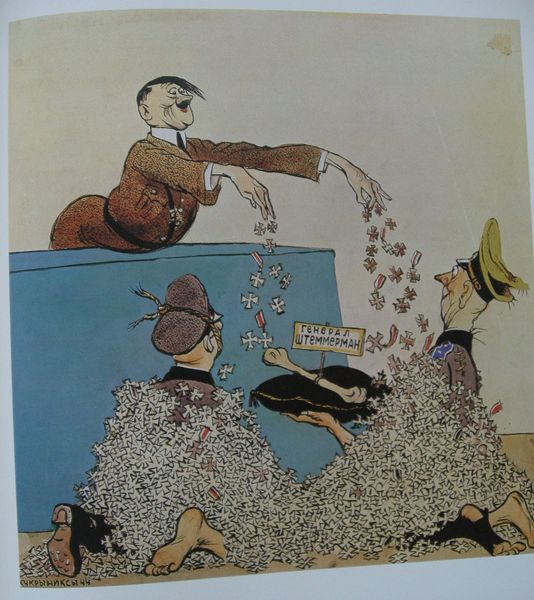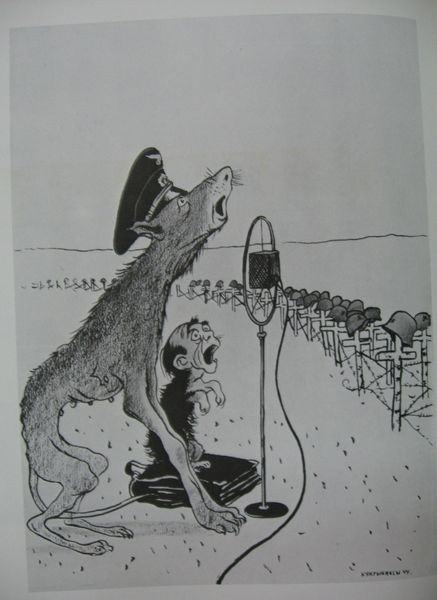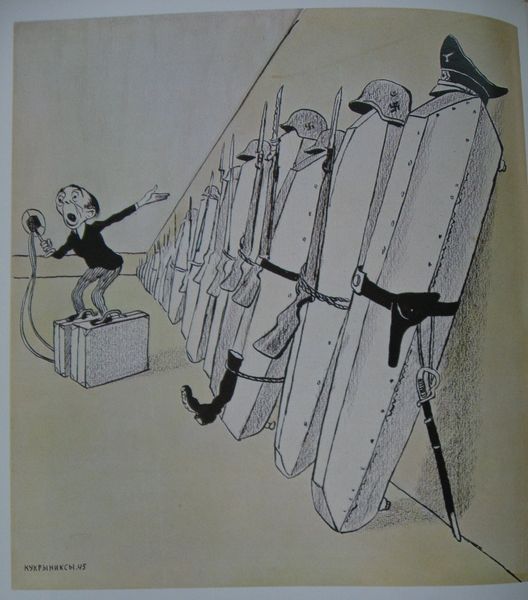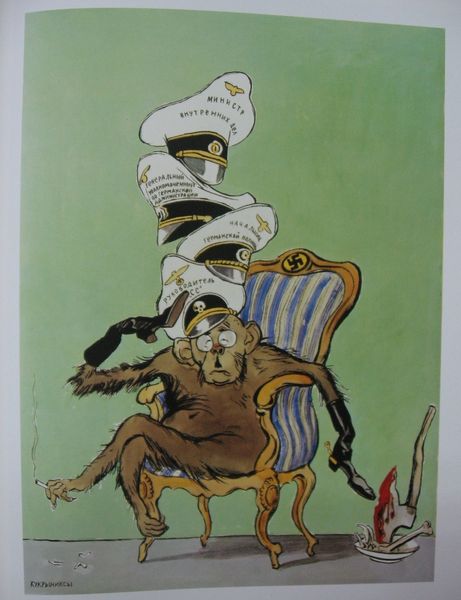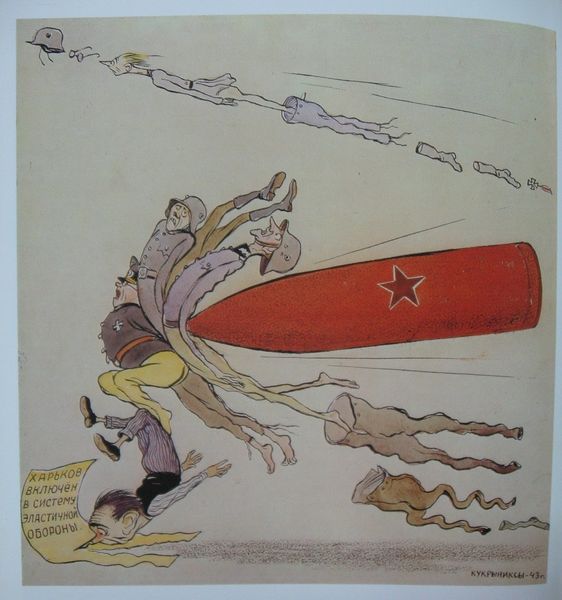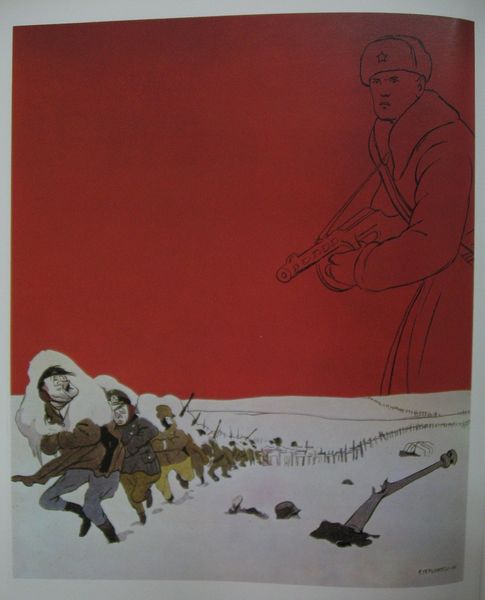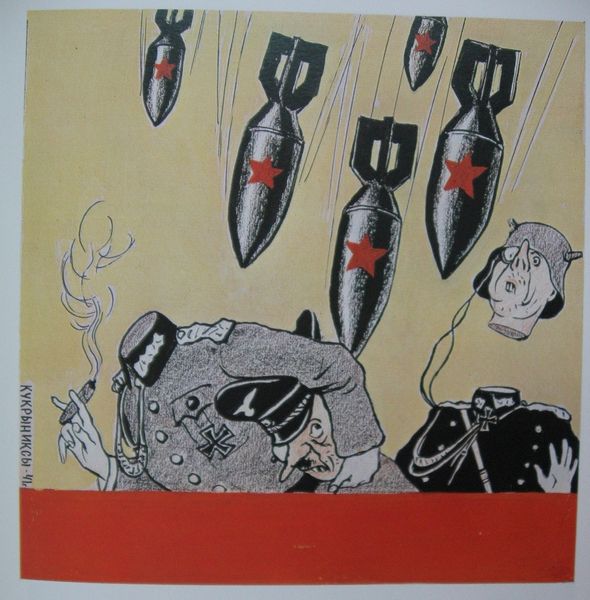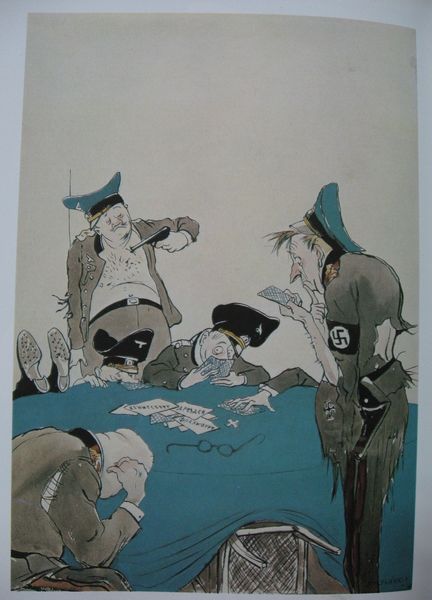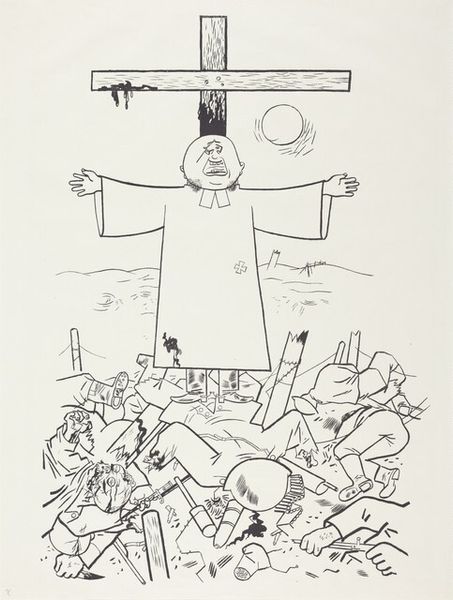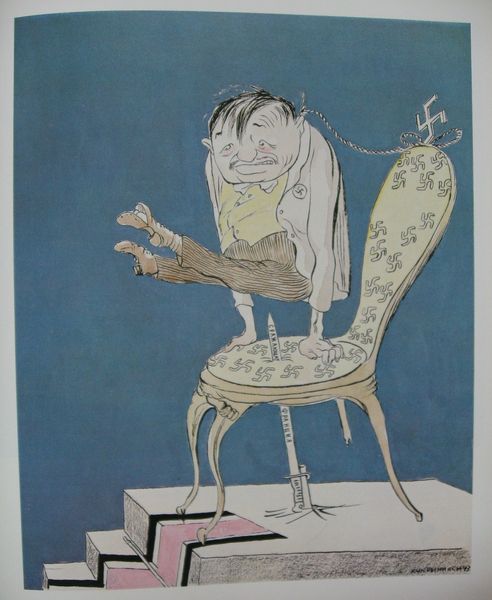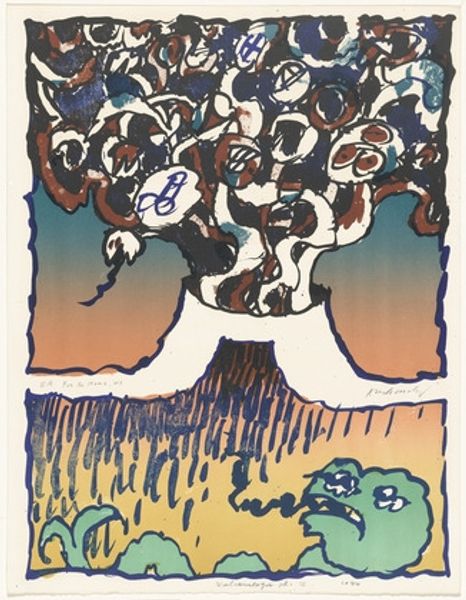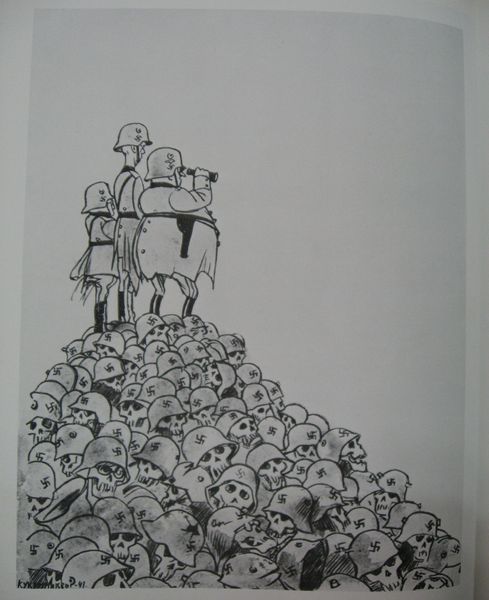
drawing, graphic-art, ink
#
drawing
#
graphic-art
#
ink drawing
#
ink painting
#
caricature
#
war
#
ink
#
watercolour illustration
#
watercolor
Copyright: Kukryniksy,Fair Use
Editor: This untitled drawing, from 1943 by the Kukryniksy collective, utilizes ink and watercolor to depict a rather unsettling scene. It feels satirical, almost grotesque, with all those… are those rats? What exactly am I looking at? How do you interpret this work, especially considering the historical context? Curator: This caricature employs potent symbolism during wartime. Notice the rats adorned with swastikas, and the large bag labelled “Bulgarian Bread.” This image directly engages with the political and social context of World War II. Editor: So, the rats represent the Nazis… But Bulgarian Bread? I'm missing the connection. Curator: Think about wartime alliances and resource exploitation. Bulgaria was allied with the Axis powers. This imagery suggests the Nazis are parasitic, plundering resources from occupied or allied territories like Bulgaria, hoarding "bread" – a symbol of sustenance – for themselves. The cartoon is making a sharp political statement about exploitation, echoing public sentiment during the conflict. Editor: I see. So it's not just a generalized hatred, it's speaking about this specific political action. Is that pretty typical of wartime art, to be so pointed? Curator: Indeed, art often serves as propaganda, reflecting and shaping public opinion. Satire, like we see here, became a weapon. Consider how easily this image could circulate, fostering resistance or reinforcing existing views about the enemy. Even the medium, easily reproducible graphic art, contributes to its socio-political function. How do you think an image like this would affect the population? Editor: I think it'd solidify opposition to the Nazi regime by depicting them as vermin, preying on the innocent. I had assumed it was anti-German people, but now realize its targeting of political policy is a more potent tactic.. Curator: Exactly. Art shapes how we understand our world, especially in moments of conflict. Seeing how the museum context has affected my own reaction has given me some things to think about!
Comments
No comments
Be the first to comment and join the conversation on the ultimate creative platform.
